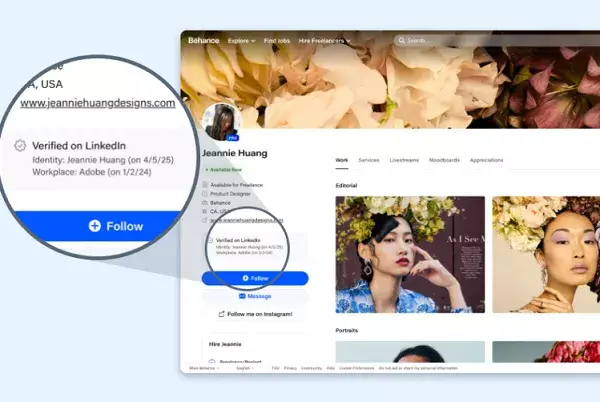In today’s digital arena, where impersonation and misinformation plague many online platforms, the pursuit of authenticity has never been more critical. LinkedIn’s recent initiative to extend its ID verification markers to third-party platforms marks a pivotal shift in how professionals can establish trust. Launched in 2023, this feature allows users to showcase their verified identities, moving beyond the outdated celebrity verification models seen elsewhere. Instead of merely flaunting paid checkmarks, LinkedIn’s approach reinforces the integrity of professional connections, ensuring that users can verify the identity of their contacts.
The Mechanics Behind ID Verification
How does this verification process function? Users can engage with third-party verification providers, who cross-verify their information against official records. Once verified, these professionals gain the privilege of displaying a “verified” badge within their LinkedIn profiles. This initiative is particularly significant in building a safer networking environment, particularly for career-focused individuals and businesses that prioritize trust. The option to display such verifications provides not merely a sense of pride; it encapsulates a commitment to professionalism and transparency that many users will appreciate.
The integration of third-party platforms, such as Adobe, into LinkedIn’s ID verification ecosystem serves to amplify this concept. Adobe’s adoption of LinkedIn’s verification process into its platforms like Behance demonstrates a mutually beneficial partnership. By allowing verified creators to display their authenticity, Adobe eliminates the burden of creating a separate verification process, thus streamlining user trust and requiring less effort on both sides. Furthermore, it enables users to establish credibility wherever they showcase their talents—whether on LinkedIn or Adobe’s content platforms.
Combatting Challenges in the Digital Landscape
As LinkedIn expands this initiative, it also addresses the growing issues of spam, bot activity, and impersonation that have become rampant on various social media platforms. The verification system acts as a bulwark against these challenges, making it increasingly challenging for malicious entities to thrive. The statistics are compelling: with over 80 million users opting into LinkedIn’s voluntary ID confirmation process, we begin to see a network effect that not only boosts individual profiles but enhances the entire LinkedIn community.
However, the juxtaposition of required verification and personal anonymity is an unparalleled challenge. Many users cherish the ability to remain anonymous as they navigate the web, allowing for personal expression without fear of retribution. While LinkedIn cateres primarily to professionals seeking to bolster their careers, discussions surrounding broader platforms that might enforce user ID requirements are inevitable. LinkedIn’s initiative may serve as a pilot program—validating that universal verification is within reach by leveraging partnerships, not imposing regulations.
The Future of Content Ownership and Identity
Furthermore, LinkedIn is also making strides in enhancing content credentials, collaborating with Adobe to incorporate metadata that acknowledges ownership within the digital landscape. This development is timely as concerns surrounding artificial intelligence-driven counterfeits escalate. By establishing a clear form of verification linked to content, professionals can better protect their intellectual property while gaining recognition for their work. This evolution is vital in a climate that is increasingly prioritizing authenticity over imitation.
Incorporating multiple layers of verification—and combining identity assurance with content ownership—sets a precedent that could reshape the digital identity landscape across various platforms. LinkedIn’s proactive stance may indeed catalyze other platforms to re-evaluate their verification processes. As discussions about user conduct and social responsibility persist, the framework from LinkedIn could guide future regulatory approaches to user IDs across all social media avenues.
LinkedIn’s ambitious move to embrace third-party ID verification markers not only bolsters individual users but also revolutionizes professional networking itself. With authenticity at the forefront, professionals can approach online interactions with newfound confidence, knowing they are part of a community committed to verifying true identities. In doing so, LinkedIn is not just responding to current demands; it is setting the stage for a more trustworthy and enriched online environment in the years to come.

